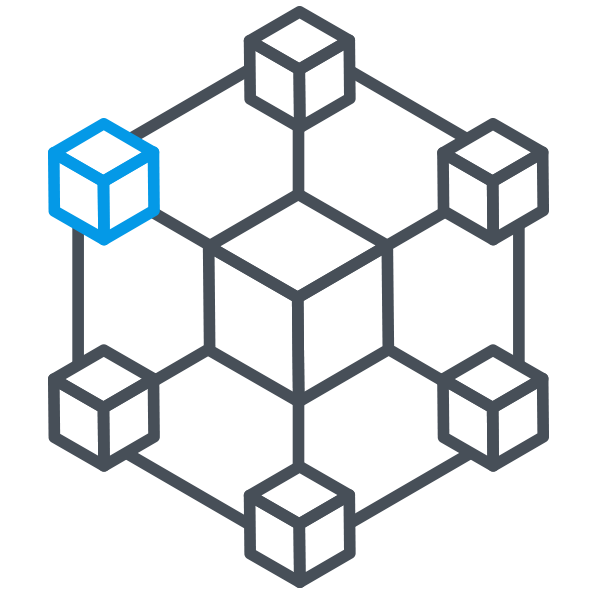BLOCKCHAIN
The Chain that will change the audit more than it is!
BLOCK CHAIN!

INTRODUCTION
- Blockchain technology lies in its use of peer-to-peer network technology.
- This combination enables parties to conduct transactions without requiring a traditional trusted intermediary payment processing network.
- Blockchain technology has evolved far beyond bitcoin and is now being tested in a broad range of business and financial applications.
- The control considerations with respect to implementing and operating blockchain solutions are much like those of a new Enterprise Resource Planning (ERP). Further new risks will arise which requires new Controls during Audit.
BLOCKCHAIN MECHANISM

1) When one participant wants to send value to another, all the other nodes in the network communicate with each other using a pre-determined mechanism.
2) This mechanism is referred to as a consensus algorithm.
3) Multiple transactions are usually combined into a “block” that is added to the ledger. Each block contains information that refers back to previous blocks and thus all blocks in the chain link together.
Steps in Blockchain

The Record: The record is checked by the network. The computers in network are called Nodes which checks the details of the record.
The Block: The records that the network accepted are added to a block.
The Chain: The block is added to the blockchain. The hash codes connect the blocks together in a specific order.
Classification of Blockchain
There are two major classifications of blockchain networks:


Permissionless
- permissionless blockchain is open to any potential user.
- A permissionless blockchain lives up to the potential of the technology by allowing anyone access.
- Eg: Providing admin access to everyone in Watsapp group.

Permissioned
- A Permissioned blockchain restricts participation in the blockchain network to participants who have already been given permission by agreed-upon administrators.
- Eg: Only admin in the group will have an access to add members and Chat in Whatsapp group.
Case Study: MORRIS GARAGES [MG] – CAR TRACEABILITY

In the automotive industry, insurance rates and resale value can be impacted by driving data. But accurate data to predict these are not always the case and hence make these process more difficult. Similarly, people looking to purchase a used car would need to accurately compare the quality of cars and rely on the stated mileage. If all these data are being shared on an open ledger which is accessible to all the stakeholders (Buyers, Insurers etc.), both the above problem can be solved. They call it as “Digital passport for cars”.
Intention is to track the car service and maintenance data over shared blockchain platform.
Highlights

- Car manufacturer MG, owned by Chinese auto company SAIC, will use blockchain to record driving data in a digital passport for its new SUV car model, MG Astor. The car will be commercialized in India and MG has partnered with Indian blockchain firm Koinearth for the project.
- Blockchain has the capacity to resolve these issues because drivers could choose to share their driving data with insurers, which can be used to calculate fair insurance rates.

Benefits of Blockchain
- The peer-to-peer distributed network contains a public history of transactions.
- A blockchain is distributed, highly available and retains a secure record of proof that the transaction occurred.
- A blockchain contains a verifiable record of every single transaction.
Blockchain based Audit
- Blockchain technology offers an opportunity to streamline financial reporting and audit processes.
- The auditor could have near real-time data access via read-only nodes on blockchains. This may allow an auditor to obtain information required for the audit in a consistent, recurring format.
- This could eliminate many of the manual data extraction and audit preparation activities that are labor intensive and time consuming for an entity’s management and staff.
Role of Auditor in Blockchain
Following are the list of potential new roles for an Auditor in Blockchain

Smart Contracts

- Smart contracts are computer code stored on a blockchain. They enable counterparties to automate tasks usually performed manually through a third-party intermediary.
- For example, Smart Contracts can be used to track items within the supply chain with full visibility and transparency. A business can use smart-contract-powered supply chains and improve its inventory tracking to a granular level.
- Smart contracts are a method to automate the contracting process.
- In short, smart contracts are those that with the help of predefined parameters for the contract to be enforced and automate the contract process from initial quotation to final payment.
Blockchain Vs Auditor

Some publications have hinted that blockchain technology might eliminate the need for a financial statement audit by auditor altogether.
By the way what are Assertions?
Balance Sheet: Blockchain will clear only its Existence assertion issues faced by auditor.
Profit and Loss Account: Blockchain will clear only its Accuracy assertion issues faced by auditor.Notes to Accounts: Blockchain will clear only its Accuracy assertion issues faced by auditor.
Conclusion
- Financial statements reflect management assertions, including estimates, many of which cannot be easily summarized or calculated in blockchains.
- Auditors conclude whether they have obtained reasonable assurance that the financial statements of an entity, taken as a whole, are free from material misstatement, whether due to fraud or error.
- Blockchains are unlikely to replace these judgments by a financial statement auditor.
Chain that will connect everything in Future! BLOCK CHAIN!
